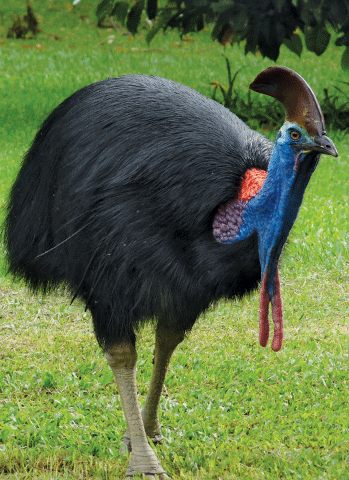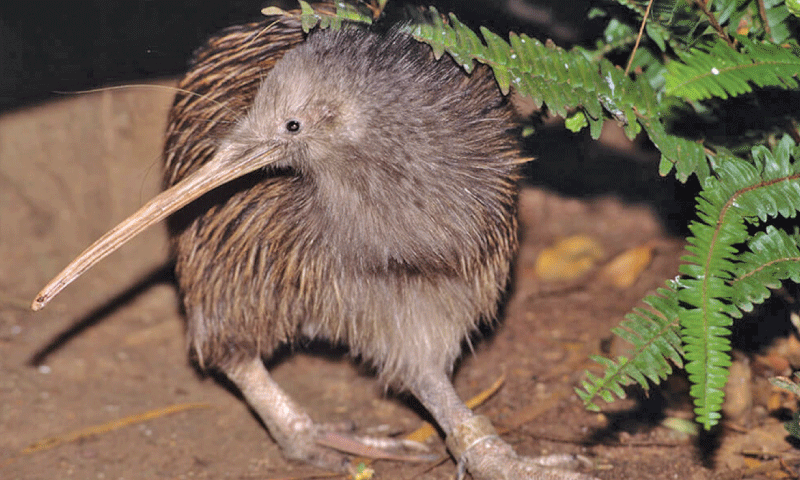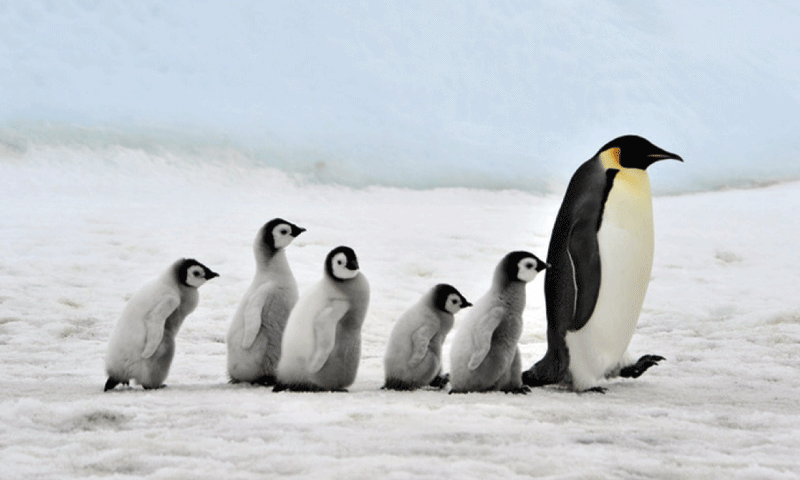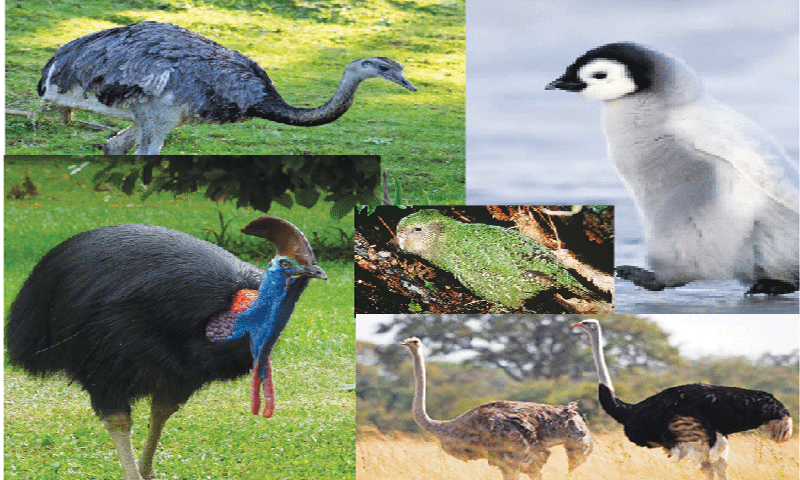When we talk about birds, we immediately think about them as the flying entities that we mostly see around us. But there are some birds that don’t have the ability to fly like normal birds do.
These birds, known as flightless birds, have lost their ability to fly due to the evolutionary process. Among such flightless birds, the ostrich is the largest and heaviest, weighing over 100 kilogrammes, while the inaccessible island rail is the smallest, weighing about 35 grams. Some of the most well-known flightless birds include ostrich, emu, cassowary, rhea, kiwi, and of course the penguin.
Generally, flightless birds are very large in size and having lived in places where they faced no danger from predators or hunters, they gradually lost the ability to fly, unlike other birds. They became great' runners instead. They escaped predators by galloping away and fighting with their massive claws. These birds have a bulky body, long strong legs, small wing bones and lack keel, due to which they can’t fly. New Zealand has a variety of such flightless birds.
Here is a more detailed look at some famous flightless birds.
Ostrich

Generally living in the desert and savannah region of Africa, the ostrich is a very well-known flightless bird, which is the heaviest and largest among all birds, standing above eight feet tall. This height helps ostriches to locate their predators easily.
They use their powerful long legs, with two toed feet, as a fighting tool against predators which also help them in escaping through long sprints. Their legs are so powerful that one kick can kill a man. Not only this, but ostriches can also attain a speed of about 43 miles per hour, which is the fastest among land birds. Only the cheetah, which is the fastest land animal, can easily overtake ostriches.
As the largest bird in the world, their egg is also the largest among all the birds. Its egg is about six inches long and weighs up to 2.5 pounds (1.13kgs). They live for about 40 to 45 years.
Emu

This bird is native to Australia, and the emu is the second largest flightless bird and is also similar in shape and size to the ostrich, with a height of six feet and weighs up to 60kgs. They also have strong legs which help them to run fast to escape predators, reaching up to 30 miles per hour.
The emu has soft feathers and inhabits open spaces in Australia. The young of the emu can easily avoid attacks from the eagle due to their erratic mode of running. It also has the ability to remain without food for weeks.
Famous in Australia, the emu’s image can also be found on its coins. The weight of its egg is approximately 0.5kg and is usually five inches in length and three inches wide. Chicks hatch out of the eggs after eight weeks.
Due to their extensive movement for food, emus are good for the dispersal of seeds of various plants and also serve as a good biological control agent by eating various insects that can cause harm to plants and crops. Emus can live for about 19 years in the wild.
Cassowary

Having prominent blue plumage and red neck, the cassowary is the second heaviest and the third tallest flightless bird in the world. It is found in Papua Guinea and north-eastern Australia.
Weighing nearly 60kgs and having a height up to nearly 5.9 feet, the cassowary has a crest that looks like a horn. It is made up of keratin, the material from which our nails are made.
With the help of its strong and powerful legs, the cassowary can run nearly 31 miles per hour. This bird is aggressive and its behaviour helps to scare away its predators and other enemies. They mostly take advantage of their long sharp claws and use them against any offender.
The cassowary likes to live in forests. Its egg weighs about 584 grams (0.584kg) with 10cm (3.9 inches) to 16 cm (6.2 inches) in length. In captivity, they live between 40 to 60 years. It is considered as one of the closest living species to the dinosaurs.
Rhea

This is also one of the largest flightless birds found in South America. The rhea has large wings but does not use them for flight, instead it runs with its opened wings, which are almost over eight feet when stretched. They have strong legs and long neck, and run like the ostrich and emu, due to which it seems almost similar to them. The rhea is 5.5 feet high and weighs up to 40kgs and lives in the wild up to 15 years. Its egg is about 5.1 inches in length that weighs up to 600 grams (0.6kg).
Kiwi

The kiwi is a small non-flying bird found in New Zealand. It is also the national symbol of this country where there are five species of this bird. Because of the significance of this bird in the country, the people of New Zealand are also called Kiwis.
The kiwi is only 20 inches tall and weighs about two pounds. It has plumage which looks like the hair in mammals. It has the ability to sense smell, a characteristic which it also shares with mammals.
Though the kiwi is small in size, it lays a large egg in relation to its body size. This bird lives in burrows and log holes. It has a long pointed beak that helps it in getting insects easily. It is mostly active at night that’s when it searches for food. The kiwi lives for up to 40 years in the wild.
Kakapo

The kakapo is a parrot with short wings, soft feathers and it does not fly. Its body weight of about four kilograms makes it the heaviest among all the species of parrots. These birds are endemic to New Zealand. Since they are not capable of flying, they are good climbers and spend day time on tree branches and become active at night. They are herbivores and forage on the ground.
Penguin

The penguin is a flightless bird which prefers the aquatic habitats of the Southern Hemisphere and Antarctic. It has black and white plumage and, instead of wings, it has flippers which help it in swimming and feeding, mostly on fish.
The emperor penguin is the largest species, which attains a height of more than three and a half feet and weighs as much as 35kgs. As a means of insulation, its thick feathers keep it warm in the cold. They preen, that is, care for their feathers, so as to keep them waterproof with the help of the oil their body produces.
All the 17 species of penguins are flightless and they walk and also slide on their bellies on ice or snow. They spend most of their time in water and lay eggs on land. The movie Happy Feet features the emperor penguin as the main characters.
Rails

The inaccessible island rail is the smallest flightless bird in the world which is restricted to Australia. This is a chicken-like bird dwelling in grassland and marshy areas. Rails fly with short bursts but are good runners and even swimmers, and eat insects, fruits and seedlings. They are very shy and usually remain under the cover of thick vegetation. The rails are ground-dwelling birds preferring wetlands, coots, crakes and gallinules. They have flourished in places where there were no predators and therefore, they never took flight.
Domestic duck and poultry

Besides these, you have seen other flightless birds which are the domesticated ducks and hens. They may fly with short burst instead of extended flight unlike common birds.
The red jungle fowl is the ancestor of domestic hens that has the ability to fly but domestic hens are not capable of flying. Similarly, the mallard duck is the ancestor of domestic ducks. The mallard duck is a great flier and covers thousands of miles during its migration from north to the south during winter. But domestic ducks have lost this ability of flight due to favourable adjustment in the human environment.
Dodo

The dodo was also a flightless bird once found on island of Mauritius but it has become extinct. This bird was about three feet tall and weighed up to 21kgs. There are sketches and paintings of the dodo but there are no photographs. It staple diet included nuts, seeds, roots and fallen fruits.
Published in Dawn, Young World, February 25th, 2017
















































